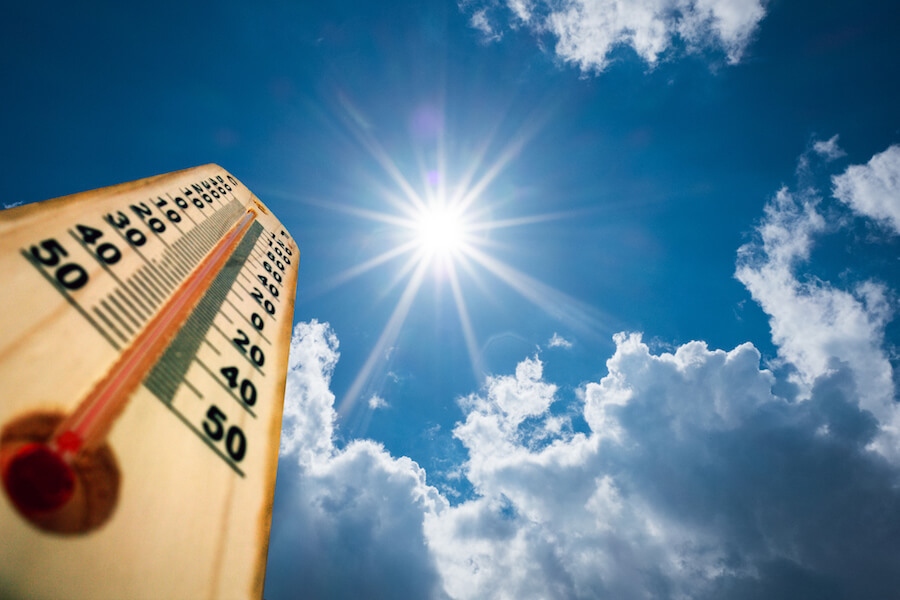Where the world warmed the most in Earth’s hottest year

Last year, more than 40 percent of the Earth’s surface was at least 1.5 degrees Celsius (2.7 degrees Fahrenheit) warmer than in the late 1800s, a Washington Post analysis of temperature data released by the nonprofit Berkeley Earth found. A warming level of 1.5 degrees is the benchmark set in the 2015 Paris climate agreement, a crucial target which experts say could limit the most dire consequences of climate change compared to two or three degrees of warming.
Roughly one-fifth of the globe has already warmed by more than 2 degrees Celsius (3.6F) compared with the late 1800s, before humans started burning fossil fuels on a large scale. Around 5 percent of the planet has warmed more than 3 degrees Celsius (5.4F) — a fast-warming area around the Arctic.
“Nothing magical happens at 1.5 degrees where impacts suddenly get substantially worse than 1.45,” said Zeke Hausfather, a climate scientist at Berkeley Earth. But there would be “a big escalation in impacts” between 1.5 and 2 degrees of warming, he added.
The Post has mapped the regions that saw the largest temperature anomalies in 2023 — places that have warmed so fast that the climate is already testing the limits of human infrastructure and the ability of the natural world to cope.
1 - Swaths of Canada and the northern U.S. saw temperatures at least 2 degrees Celsius above the preindustrial average, contributing to Canada’s worst ever recorded wildfire season.
A study led by Imperial College London researchers found that climate change made the fire-prone weather at least seven times as likely and 50 percent more intense. “In the absence of those conditions, it would have been very hard to see the extent of forest fires that we’ve seen,” said Carlo Buontempo, director of the Copernicus Climate Change Service, Europe’s top climate agency. Around May, smoke from the blazes blanketed cities as far south as Washington, D.C.
2 - Brazil, Paraguay and Bolivia all experienced unusual temperature spikes in 2023 despite warming more slowly in recent decades, according to Berkeley Earth data.
Carlos Nobre, Earth System scientist at the University of São Paulo, said 2023 marked the fourth time the Amazon region went into severe drought in less than 20 years, something never seen before in the historical records. “This is not natural variability,” he said.
Last year’s drought shut down hydropower plants in Brazil and cut off riverside communities in the Amazon from the outside world as connecting waterways turned into empty sand banks.
3 - Europe has seen much higher rates of warming than other parts of the globe. In 2023 parts of the continent were up to 3 degrees warmer than in the late 19th century.
Researchers don’t fully understand why temperatures are rising faster in Europe, said Friederike Otto, a senior lecturer in climate science at Imperial College London’s Grantham Institute. One factor could be that European governments have worked to clean up aerosol pollution from cars and industry in recent decades. These small particles, while very harmful to humans, have a cooling effect on the climate.
Heat waves are among the top concerns as Europe and other parts of the planet continue to warm, and their health risks remain widely underestimated, Otto said. “We see temperatures that have never been reached before, and months and months of heat that our societies are not adapted to.”
4 - 2023 saw record levels of heat in the oceans too. High temperatures over the tropical Pacific, caused by the El Niño weather pattern, occurred on top of a long-term increase in ocean heat content, a climate metric that captures not only the temperature at the surface of the sea, but also heat energy stored as deep as 2,000 meters, or 6,600 feet below surface.
While there is some natural variability in temperatures from year to year, the world will soon face escalating climate impacts unless countries take drastic action on cutting emissions, according to scientists.
“It’s very likely that in 20, 30 years time, we will look back at the climate of the early 2020s as a period when [the temperature] was still manageable, when it was cold, in a sense,” Buontempo said.
You can return to the main Market News page, or press the Back button on your browser.

